Mouse patterns can be highly effective on some species of fish. A small mouse is a good meal for most predators, and this pattern is easy to tie, and a great rodent imitation
Floating foam flies have been popular for quite some time. From the infamous Tjernobyl Ant over different hopper patterns to the surface patterns that have become popular for Baltic sea trout during the last few years.
But one kind of surface foam flies have been around for a long time, and these are the mouse patterns used to chase the really hungry fish, from Pacific rainbows to pike and other fierce predators.
And Malaysian Dron Lee has added another pattern to the flock of mice Dron’s Mice Gugger, which is a fairly tiny mouse pattern, quite easy to tie. It’s essentially a gurgler tied in the Gartside tradition, but thanks to a tail, some fur and rubber legs, it’s a near-perfect little mouse imitation, able to make a lot of noise in the surface, and was originally designed to catch Sikang AKA Malayan or Burmese trout (Barillius guttatus or Raiamas guttatus). These are not actual trout, but more related to carps and minnows (cyprinid fish).
As Dron writes:
“They caught the big Malayan Trout (Sikang) on a little mice pattern... my take on the mice tied on Ahrex NS122 Light stinger size 8. Love the hairy effect with the guard hair… with rubber legs.”
The pattern is simple and easy to tie, and uses commonly accessible materials, which should be easy to find for most tyers, maybe even in their existing stock. Dron’s recipe calls for nutria hair, but if you exchanged this for rabbit, fox or some other soft hair, the fly would probably not be less efficient.
The fly is small enough to be used for sea trout, bass or any other fish willing to take a fly in the surface, but it's easy to increase the size by simply selecting a larger hook and increasing the size of the materials proportionally.
- Start the thread in the front of the hook and prepare a thread base.
- Cut a piece of chenille or a narrow strip of suede about two times the length of hook shank.
- Heat the chenille with a lighter to keep it from unravelling.
- Tie in the micro chenille or the suede strip as a tail.
- Prepare the foam, cutting a tapered rectangle and rounding the corners. It needs to be about 1½ times the shank length and as wide as the hook gape in the wide end.
- Tie in the wider end of the foam in the rear of the hook, just catching the tip of the foam with the rest pointing backwards.
- Make a thread loop in front of the foam.
- Prepare the nutria fur, cutting a small bunch off the skin, keeping only the underfur and the shorter guard hairs.
- Spin the hair in the thread loop.
- Wrap the fur in touching turns until most of the shank is covered.
- Tie down and trim off the remains of the loop.
- Fold over the foam and tie down so that a lip forms over the hook eye.
- Tie in the rubber legs on the underside of the fly, two pieces crossing, forming four legs.
- Add a bit of fur as dubbing to cover the leg bases and the spot where the foam is tied down.
- Take the thread forwards to under the foam lip, whip finish, trim and varnish.
Perak Fly Fishing Syndicate
A lot of the images in this article were provided by members of the Perak Fly Fishing Syndicate (PFFS), a group of passionate fly fishers who have worked to conserve the sikang and its habitat.
If you want to see more, you can check out their YouTube channel or join their group on Facebook.
- Log in to post comments

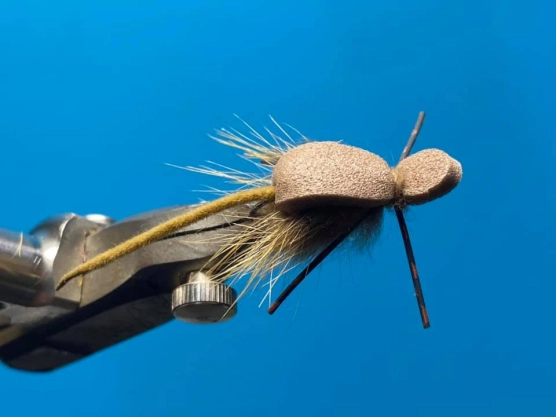

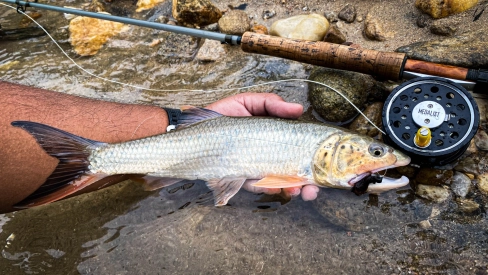
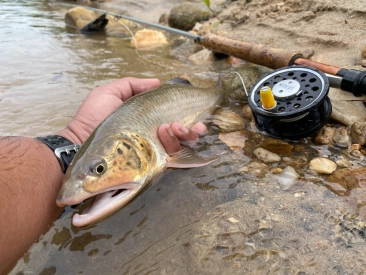
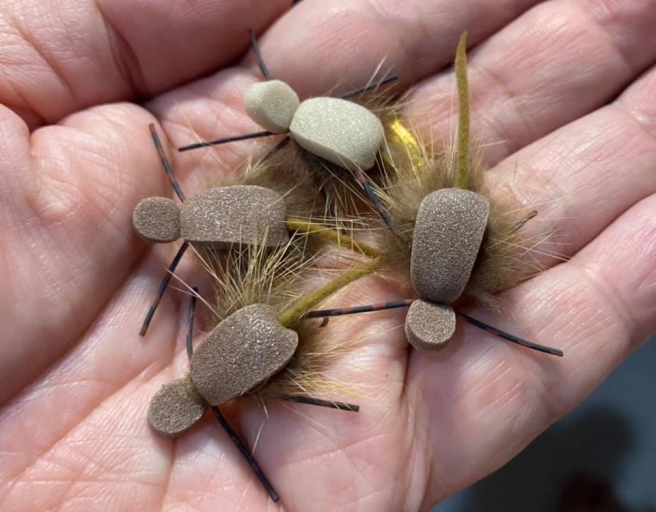
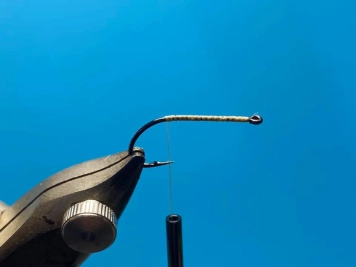
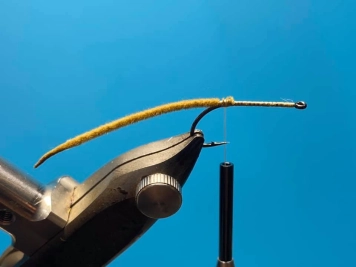
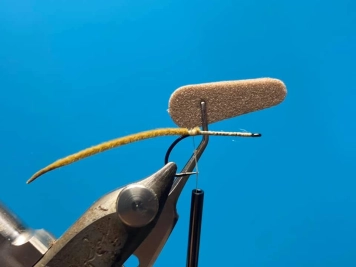
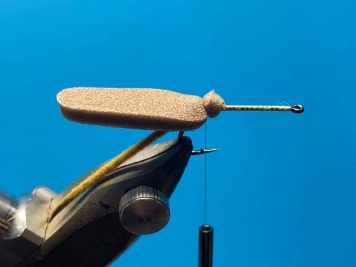

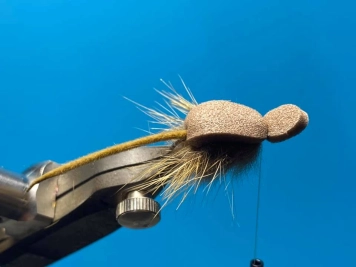

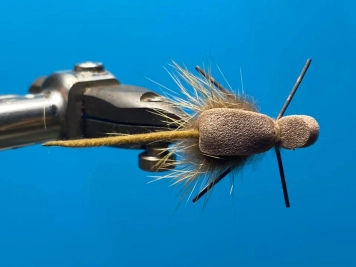
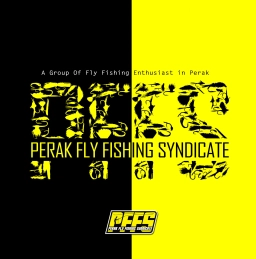
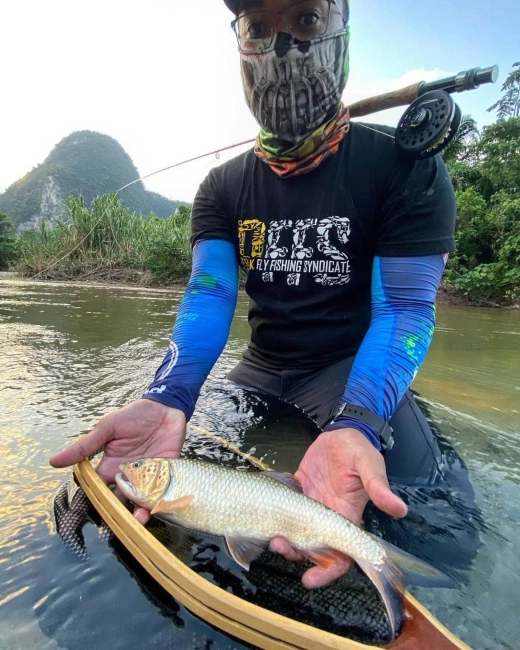
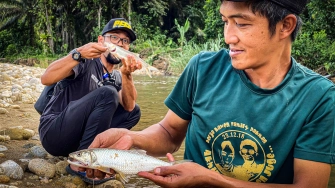
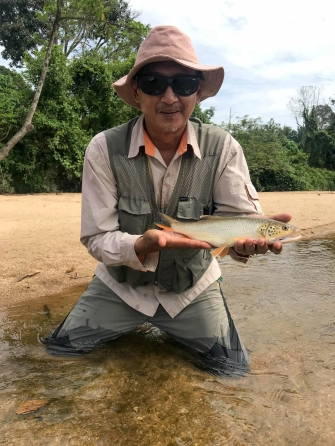
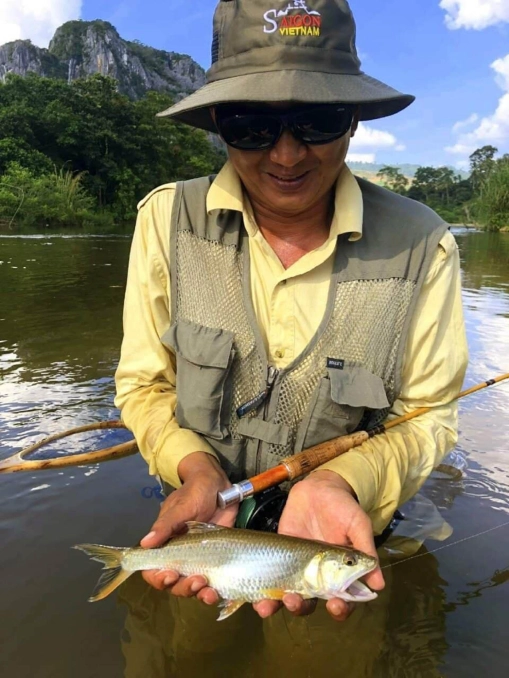
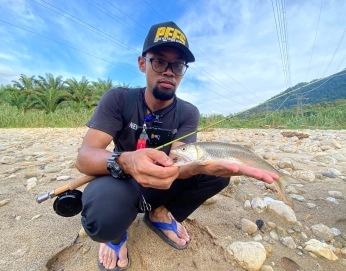
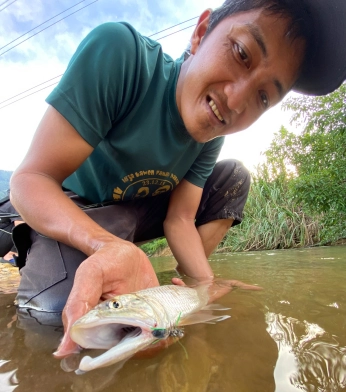
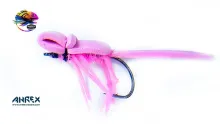
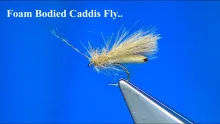
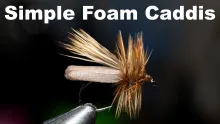
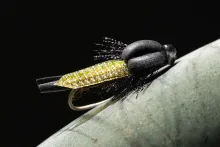
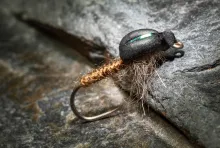
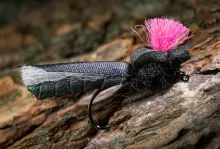

substitutions
i've been tying a similar pattern for the few years
however instead of fur i use whatever large hackles i have and palmer those onto the hook
for the tail i switched to silicone cord from some craft store
here in middle america the pattern has taken a variety of panfish, bass, gar and even a few carp
snapping turtles seem to like them in late summer and early autumn
on the road trout seem fond of the mice in sizes 6 and 8